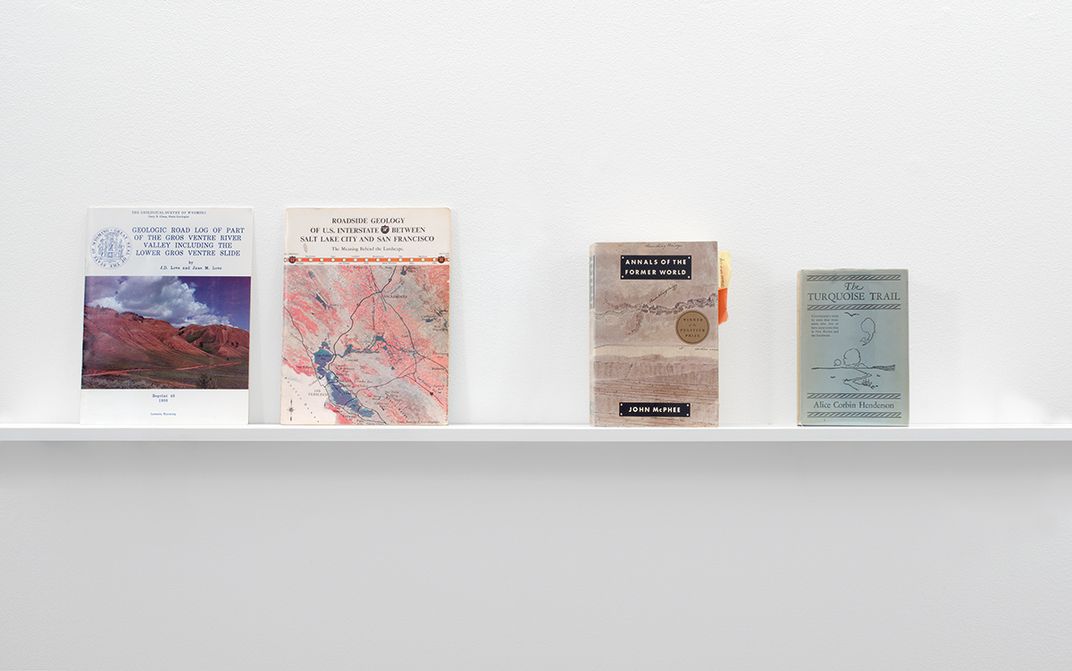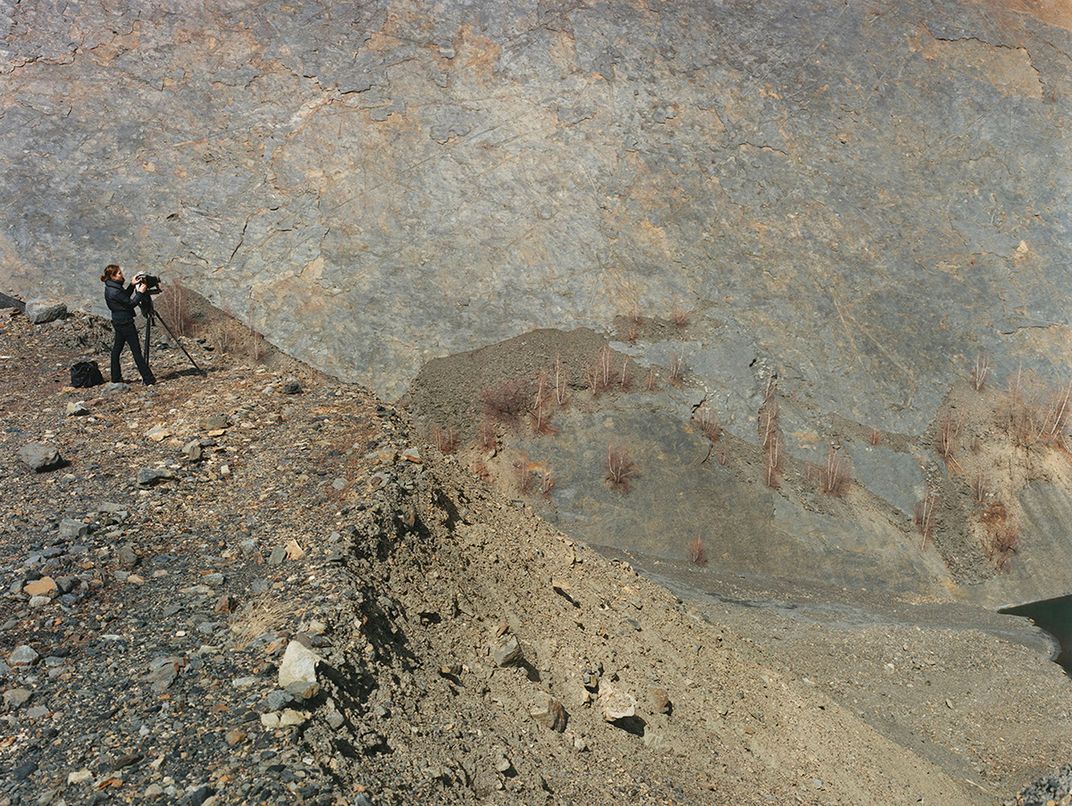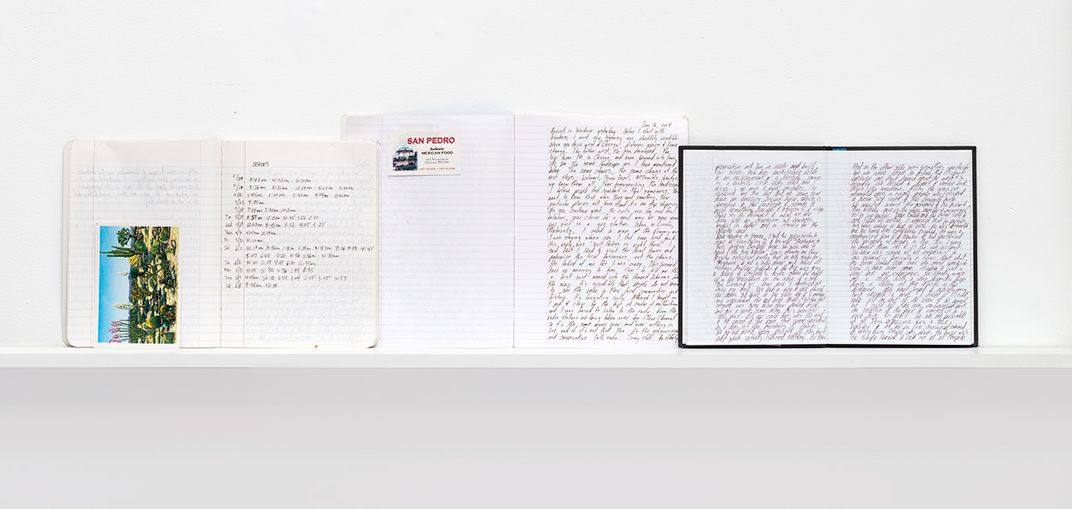Stark Photographs of America the Beautiful, Forever Altered by Man and Nature
Victoria Sambunaris’s new photography book, Taxonomy of a Landscape, goes beyond the amber waves of grain to catalogue what’s on America’s horizon
Photographer Victoria Sambunaris seems to live two very different lives. Since beginning her project in 2000, Sambunaris has been taking road trips across the country, three-to-six months at a time to photograph the American landscape, traveling alone on the open road. Then, she returns home to the frenzy and chaos of New York City to lecture, edit and show her work and research and plan her next trip. “I live these two extremes,” says Sambunaris, “but I can’t be without the other. I need New York and I need that energy and then I need to be on the road.”
Sambunaris had previously only traveled up and down the East Coast, but upon finishing graduate school in 1999, Sambunaris took her first road trip across the country with a friend. “I brought all my camera equipment with me and I didn’t take one photograph, because I was completely overwhelmed by the country and how big it was,” says Sambunaris. “It was almost like I didn’t know where to focus my camera.”
When they reached the West Coast, Sambunaris hopped on a plane home and began planning her first solo trip. Now she drives through almost every state each year. She has driven to Alaska and traveled to Hawai’i, on major interstates like I-80 and along the U.S.-Mexico border, focusing on a variety of societal issues, including immigration, transportation infrastructure and the booming (or waning) energy industry. Her new book, Taxonomy of a Landscape, is a culmination of her last 12 years cataloging landscapes formed by man and nature.
Sambunaris captures all her images with a large-format camera, a piece of equipment that requires not just a tripod, but an elaborate and careful process for each shot. Most of Sambunaris’s time is spent scouting with a smaller camera and searching for the perfect light. Once all the conditions are right, which may take days of waiting, Sambunaris travels with her cumbersome equipment and usually only shoots two sheets of film per locale. “Photography is a solitary act and forces you to look hard and observe. It requires patience and is almost meditative, especially shooting with a large format camera where there is time involved setting up and waiting,” she writes in an e-mail. “Photography is my vehicle for understanding the world and our place in it.”
After taking about 50 photographs, which can take a month or two, Sambunaris ships her negatives to a developer to keep the film out of the heat of her car and to make sure that there are no problems with her equipment. When Sambunaris returns home, she begins rigorously editing down her work. Following a three-month trip, she’s usually happy to have five images. She writes, “since I don’t work digitally in any capacity, I can’t count on ‘fixing’ anything in post-production. All the circumstances have to be perfect.”
There is an innate curiosity within Sambunaris. Before embarking on a trip she reads everything she can get her hands on about a topic. The books range from biographies and literature to history books, news clippings, photographs and geological texts. “It’s interesting to think about how a place changes and what it was and what it is and what it will become,” she says. Books are always in her car on road trips and she journals extensively during every trip. “The journals help me remember facts about a place, the encounters that I have and information that I received at that place.”
She read Mark Twain in Hawai’i before traveling to the island state, and Annals of the Former World, in which John McPhee travels with geologist David Love, was a huge influence on her trip across Interstate 80, which stretches from San Francisco to New Jersey. Although Love had passed away by the time Sambunaris began her journey, she contacted his son, Charlie, who works as a geologist today. Much as his father had with McPhee, Charlie taught Sambunaris about geology and invited her out to Wyoming to go on an expedition.
That began her work on Yellowstone, where she focused on plate tectonics and the super volcano beneath the park. Looking through Taxonomy of a Landscape almost feels like taking a journey with Sambunaris. The book begins with her beautiful landscape images from coast to coast. Some contain barely a hint of human influence, while others have roads, trains and fences meandering through the landscape in interesting ways. One image that seems to be a tranquil lake is actually a sculpture over buried uranium waste in the Navajo Nation. Its format is inspired by the geology books Sambunaris carries in her car. Whereas those books have pockets for maps or drawings, Taxonomy includes a short story by author Barry Lopez and a poster of photographs Sambunaris shot with a medium-format camera
With her book published, Sambunaris is only ready to continue. “I see Taxonomy of a Landscape as a lifetime’s work. The country is forever changing and evolving in some capacity so the work is endless.”
‘Taxonomy of a Landscape’ is available now from Radius Books.
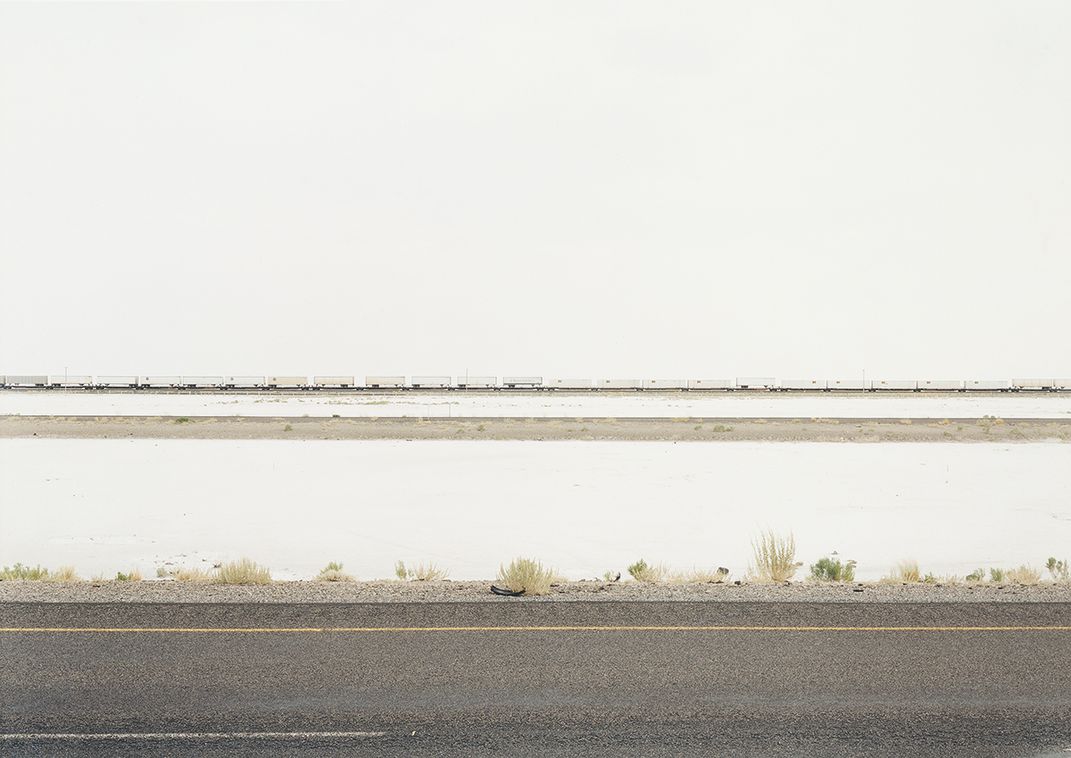
/https://tf-cmsv2-smithsonianmag-media.s3.amazonaws.com/filer/a6/37/a63798a4-338c-46de-9187-d8720322010c/3_untitled_alaskan_pipeline_at_atigun_pass.jpg)
/https://tf-cmsv2-smithsonianmag-media.s3.amazonaws.com/filer/fb/87/fb878396-51b6-4629-852d-801a169d35df/5_untitled_hercules_gap.jpg)
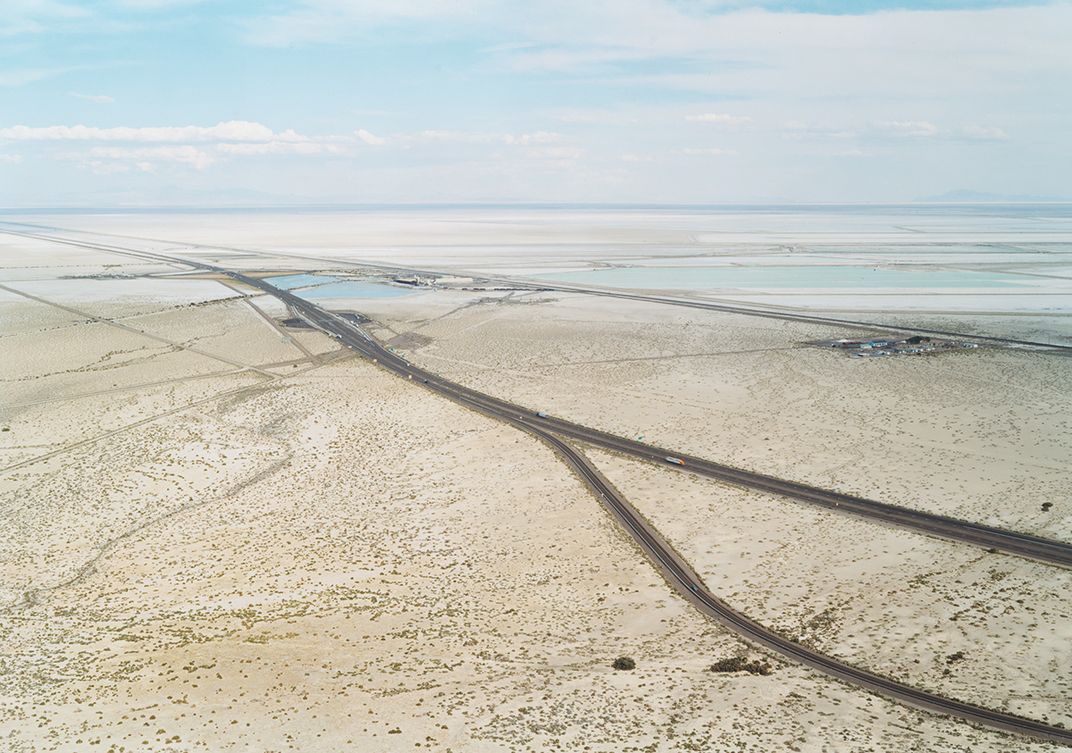
/https://tf-cmsv2-smithsonianmag-media.s3.amazonaws.com/filer/8a/50/8a50b4ba-b9e3-42cc-9bcb-11309581ab05/1_untitled_red_containers_stacked.jpg)
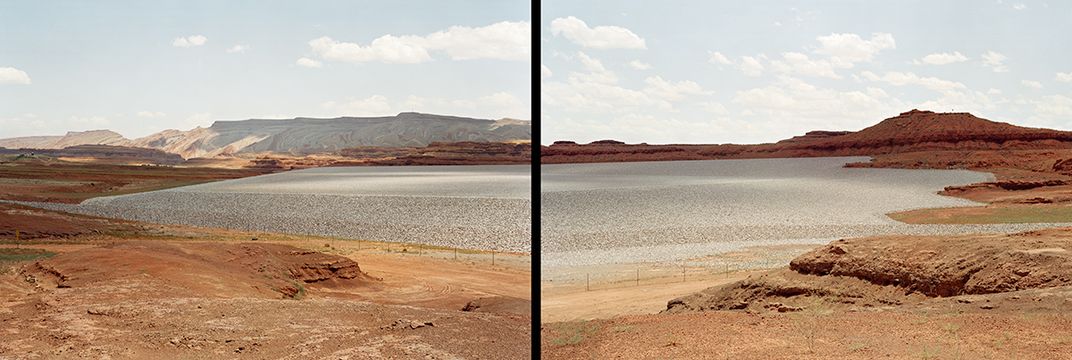
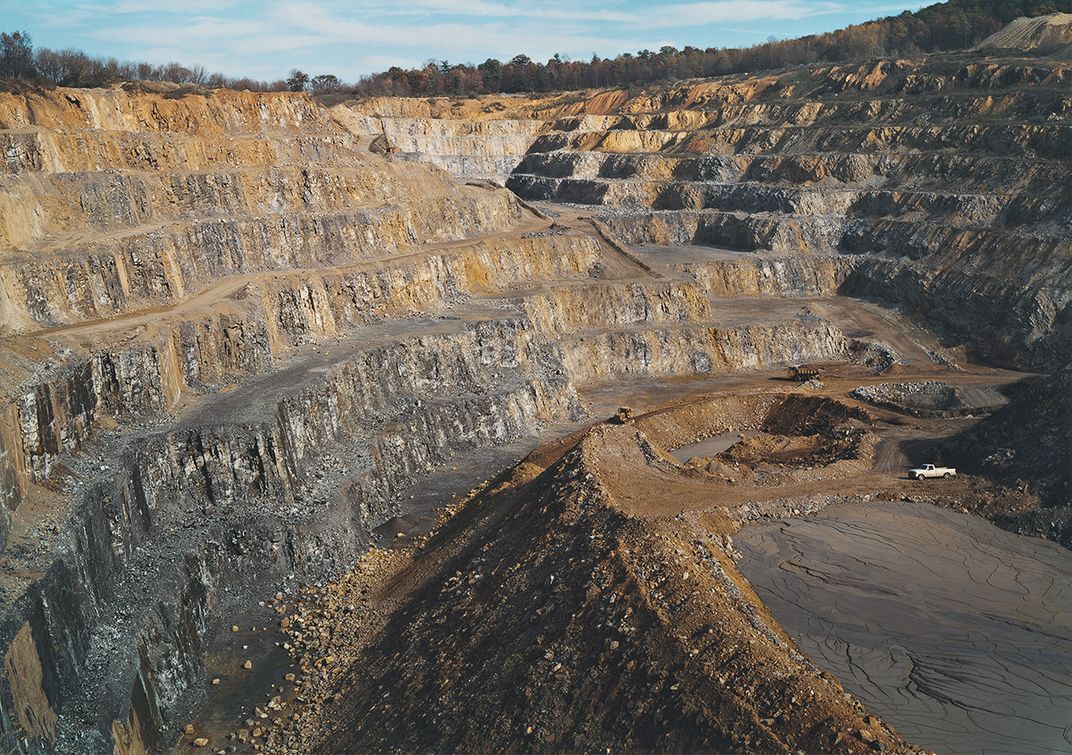
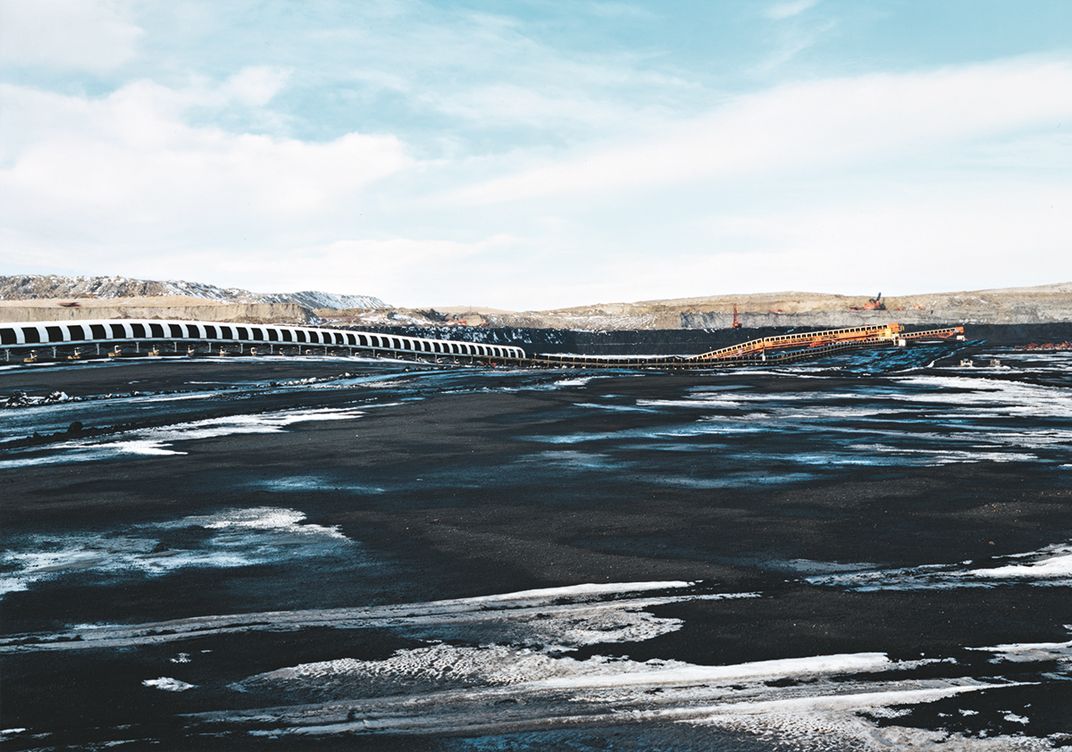
/https://tf-cmsv2-smithsonianmag-media.s3.amazonaws.com/filer/9f/86/9f860b48-670a-46c0-83a9-aedc6453d2aa/7_untitled_coal_mine_99_pit.jpg)
/https://tf-cmsv2-smithsonianmag-media.s3.amazonaws.com/filer/81/1e/811e0054-3479-4736-8735-620219ded330/10_untitled_distant_steam_vents.jpg)
/https://tf-cmsv2-smithsonianmag-media.s3.amazonaws.com/filer/b0/e6/b0e68172-62af-4b1d-9d4d-a73e62149aef/11_untitled_man_on_horse_in_rio_grande.jpg)
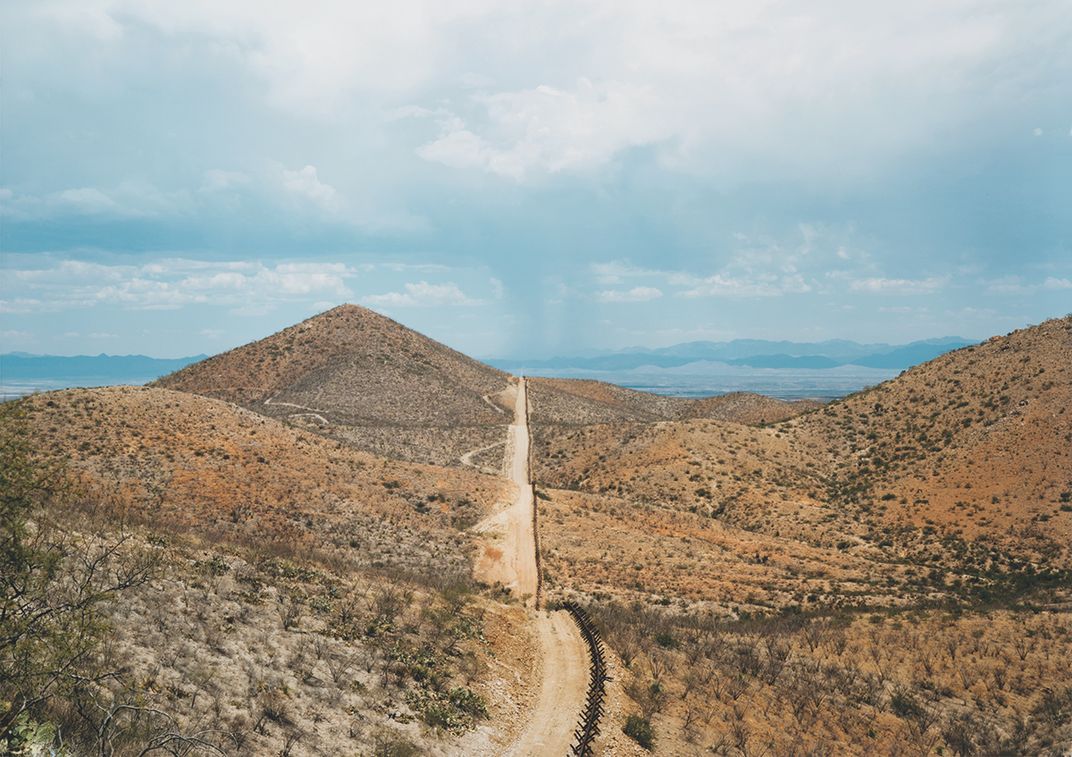
/https://tf-cmsv2-smithsonianmag-media.s3.amazonaws.com/filer/72/9d/729d57ab-ac1b-4ffe-94bf-e9dbc7ae29f6/12_untitled_dunes.jpg)
